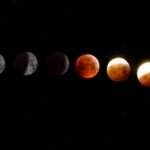
Poland has an incredibly rich and diverse history, stretching back to the 10th century.
Throughout this timeline of over a thousand years, Poland has seen its fair share of foreign rulers, wars, famines, and cultural movements.
From the early Middle Ages to modern times, Polish history is filled with moments that have shaped the nation as we know it today.
This timeline takes you through a comprehensive look at the major events and periods that have defined Poland’s past, from early settlement to modern times.
Through this journey, we can gain insight into the complex history of this great nation and its people. Enjoy!
- Read also: A Fascinating History of France Timeline
- Read also: The Fascinating History of Europe in a Timeline
Early History (900-1386)
• 966-972 A.D.: Poland is founded as a unified state under the rule of Mieszko I, Duke of the Polans tribe.
• 1000 A.D.: Polish ruler Boleslaw I was crowned as King of Poland by Pope Sylvester II in Rome, thereby establishing an independent kingdom on Polish soil.
• 1138: The Diocese of Krakow is established by Pope Innocent II, and becomes the center of Catholic life in Poland.
• 1241: Mongol invasions devastate Poland, leaving it vulnerable to subsequent foreign conquerors.
• 1333-1370s: Under King Kazimierz III (Casimir III), Poland experiences a period of economic and cultural growth.
Polish-Lithuanian Commonwealth (1386-1795)
• 1386: The Union of Krewo unites the Kingdom of Poland and the Grand Duchy of Lithuania, forming a strong federation known as the Polish–Lithuanian Commonwealth.
• 1569-1572: A series of wars between Poland and Russia (known as the Livonian War) resulted in the independence of Livonia, and the eventual annexation of part of Belarus by Poland.
• 1648-1654: The Deluge ravages the Polish–Lithuanian Commonwealth as Swedish forces invade, resulting in a period of political instability, economic decline, and foreign occupations.
• 1791: The Constitution of 3 May is signed into law, giving Poland the first democratically elected legislature in Europe.
Partitioned Poland (1795-1918)
• 1795: Poland is partitioned between Prussia, Austria, and Russia; this marks the official end of the Commonwealth as an independent nation.
• 1807-1815: Napoleon Bonaparte briefly restores a Polish state during his failed campaign against Russia, the Duchy of Warsaw.
• 1863-1864: The January Uprising marks an attempt to throw off Russian rule in Poland; it is eventually put down with great brutality.
Independent Republic (1918-present)
Independent Poland (1918-1939)
• 1918: Following WWI, Poland reclaims its independence as the Second Polish Republic; Józef Pilsudski is the first president.
• 1935: The University of Warsaw is established, becoming a world-renowned center for research and higher education.
World War II and Communist Era (1939-1989)

• 1918: Following WWI, Poland reclaims its independence as the Second Polish Republic; Józef Pilsudski is the first president.
• 1944: The Warsaw Uprising marks a failed attempt to reclaim Polish autonomy from Nazi Germany, resulting in great destruction and loss of life.
• 1947: Poland falls under the control of the Soviet Union and becomes part of the Eastern Bloc.
- Read also: History of Iceland Timeline
- Read also: Who Discovered Greenland
Post-Communist Poland (1989-present)
• 1989: The Solidarity movement peacefully overthrows the Communist regime, marking the beginning of a new era in Polish history.
• 2004: Poland joins NATO and the European Union, becoming part of a larger economic and political union.
• 2015: Poland elects its first conservative president since the fall of Communism, Andrzej Duda.
• 2018: Poland celebrates 100 years of independence, honoring a century of political and social progress in the nation.
Today, the history of Poland is filled with many ups and downs, but also a great sense of pride among its citizens.
From its earliest settlement to modern times, the events that have shaped Poland we know today are a testament to the strength of its people and their commitment to freedom.
Despite past struggles, Poland is now firmly established as an independent nation capable of facing whatever challenges may come in its future.
As it continues to create its own unique path through history, Poland stands as an example for other countries looking to find their place in the world.
With a bright future ahead, Poland is sure to continue making its mark on the world stage for years to come.
FAQs
The country was known as the Polish-Lithuanian Commonwealth before Poland. It existed from 1386 to 1795.
The Polish descend from a number of different peoples including Celts, Slavic tribes, and Germanic tribes.
Russia took over Poland in 1795 as part of the Third Partition of Poland. The partition was agreed upon by Russia, Austria, and Prussia in order to divide up the territory of the Polish-Lithuanian Commonwealth.


